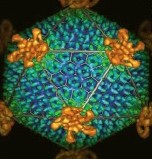- Home
- Research Areas
- Biological Sciences (BIO)
- Computer and Information Science and Engineering (CISE)
- STEM Education (EDU)
- Engineering (ENG)
- Environmental Research and Education (ERE)
- Geosciences (GEO)
- Integrative Activities (OIA)
- International Science and Engineering (OISE)
- Mathematical and Physical Sciences (MPS)
- Social, Behavioral and Economic Sciences (SBE)
- Funding
- About Funding
- Due Dates
- Find Funding
- Merit Review
- Policies and Procedures
- Preparing Proposals
- Recent Opportunities
- Transformative Research
- Related Links
- Proposal and Award Policies and Procedures Guide (PAPPG)
- Grant Proposal Guide (GPG)
- Research.gov
- FastLane
- Funding Opportunities For
- Graduate Students
- K-12 Educators
- Postdoctoral Fellows
- Undergraduate Students
- Awards
- Document Library
- News
- About NSF
|
|||||||||||||||||||||||||||||
|
|
|||||||||||||||||||||||||||||




